When we began evaluating aggregate analytics from all our data back in the early summer, we weren’t sure what to expect. Our metrics are different than those of the Postal Service. The Postal Service’s service performance measurement is binary – mail is on-time, or it isn’t. We’re focused more on how long it takes to be delivered, which generally reveals more useful information in mail planning.
Here’s our simplest report – National Average Delivery in Days by Week. In this case we do measure how much mail is delivered on time, and how much is late, as well as how late it is. We also offer four views: First-Class letters and flats, and Marketing Mail letters and flats. (We call Marketing Mail “Standard”). Here the most recent view for First-Class Letters:
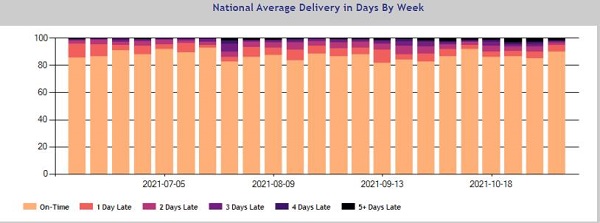
These reports are still based on the older, stricter standards. All in all, a favorable report through the week of November 8, despite relaxed standards. Our system also allows me to eliminate those pesky on-time pieces and focus on how late the late mail was: 

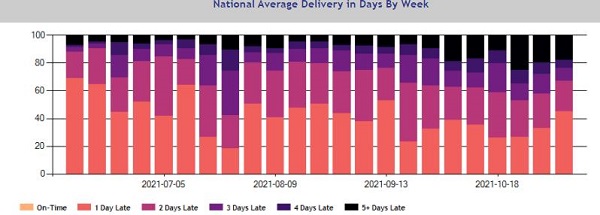
In this view, you really can see the impact of the October 1 change in performance standards. There was a lot more mail that was more than five days late (against the old standards). So, overall, mail is on time, but that which is late is later.
Here’s the same analysis for Marketing Mail letters:
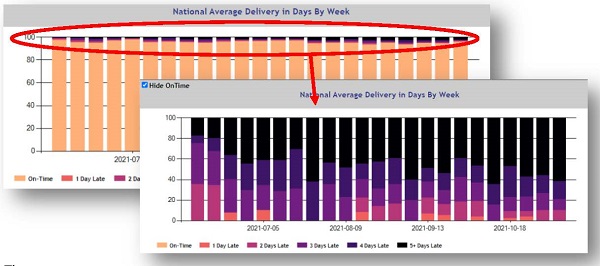
The vast majority is on time, but those that are late are often quite late. Service performance standards for Marketing Mail have not been changed, but they were generous to begin with.
Not surprisingly, First-Class flats don’t perform as well as letters:
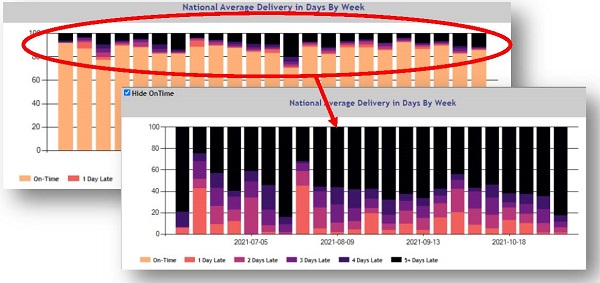
When they’re late, they are quite late.
National performance is important to watch as a barometer of delivery times, but for many mailers, SCF performance is more important. If you induct a Marketing Mail mailing at a destination SCF, how long will it take from induction to delivery? If it’s letters, 2-3 postal days for most, with a few exceptions:
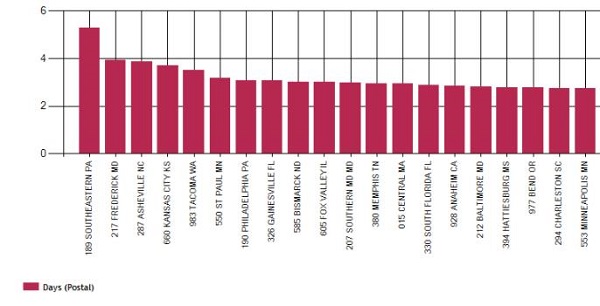
The first few you see listed are consistently slow performers, particularly Southeastern PA, Frederick MD, Asheville NC, and Kansas City KS. If you are drop shipping to those destinations, you would be wise to allow a few days extra.
This is still new data to us, and we are continuing to build confidence in the data overall. It is based on anonymized mail that we track, and is based on more than 700 million pieces tracked and qualified to date.
Through last week, national performance has been good, but delivery last year did not go off track until mid- late November, so we’ll be keeping a close eye on it, and sharing more of this data every month, as well as on our US Mail Traffic Report every Monday on the SnailWorks LinkedIn page.